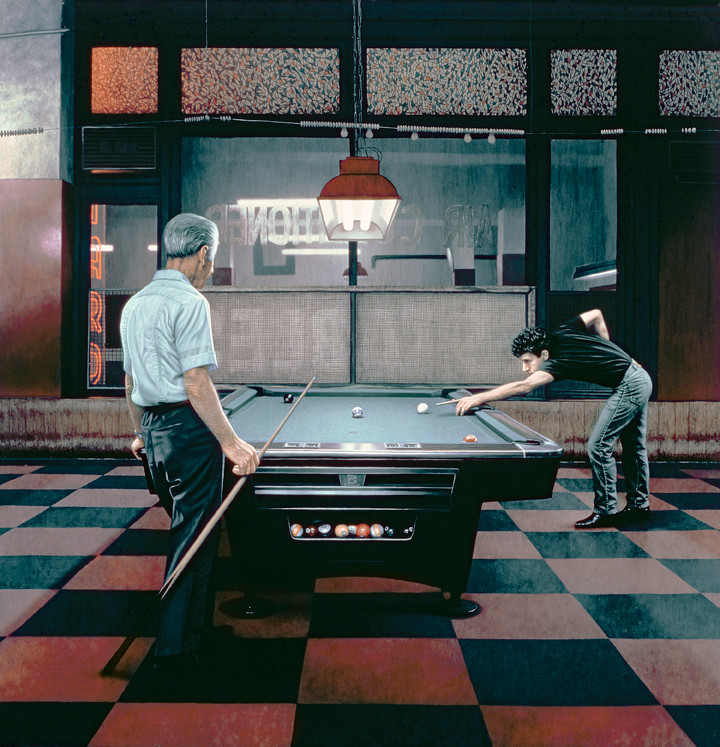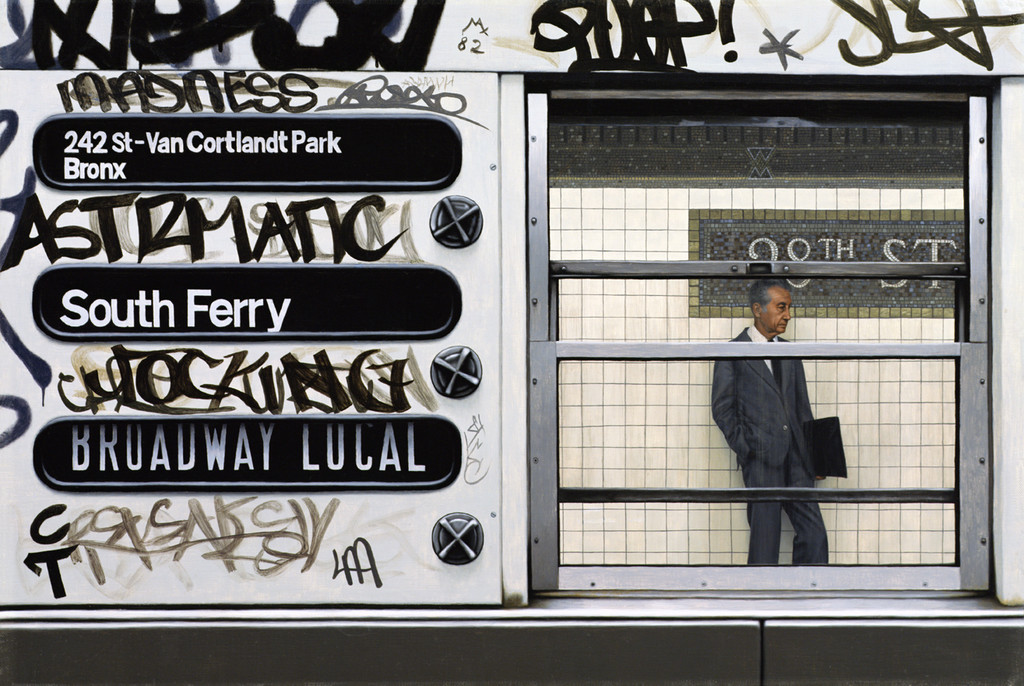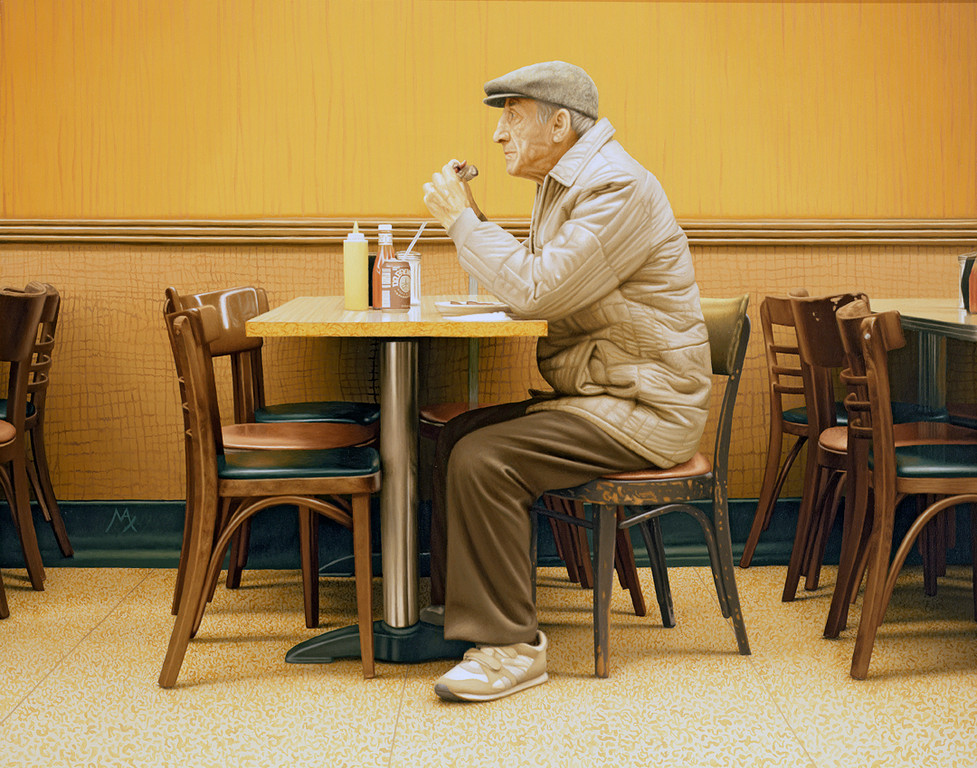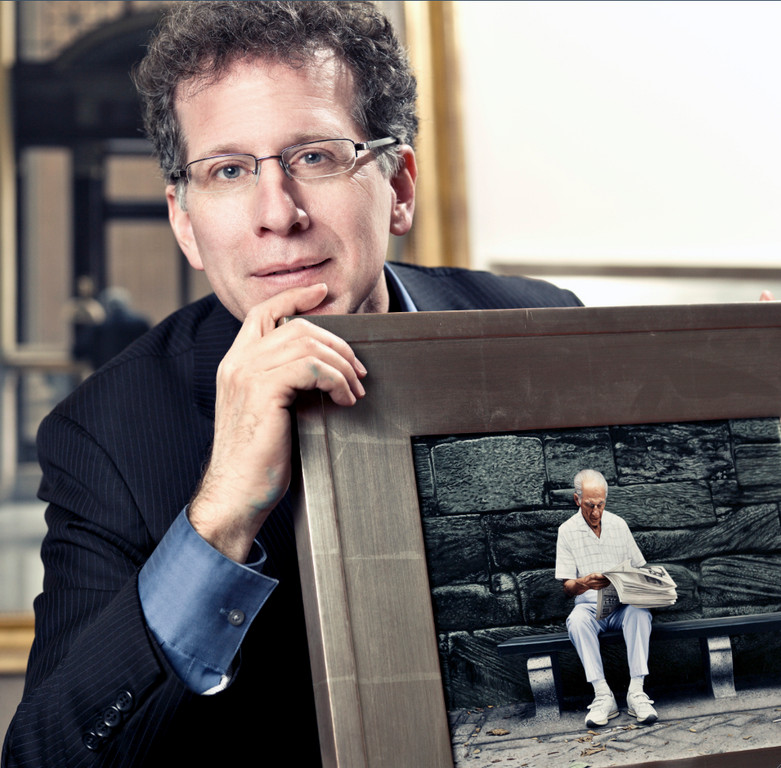Finding beauty in the everyman
Woodmere native Max Ferguson highlights his ‘common’ dad
Taking what is commonplace and highlighting what is unique about it is what Five Towns native and artist Max Ferguson strives for in his work.
In his latest exhibit, “Painting my Father,” that is currently on view at the Hebrew Union College –Jewish Institute of Religion Museum in Greenwich Village, Ferguson serves up 30 years of realist paintings of his father — Richard Ferguson —a lawyer who died at 92 in 2005.
“One lesson I learned from Dutch genre painters as well as early 20th century American painters, was this concept of making the ordinary extraordinary, and finding beauty in everything,” said Ferguson, who grew up in Woodmere and graduated from Lawrence High School in 1976.
Richard Ferguson considered himself no different than anyone else “the everyman” Ferguson said, and that is how he depicts his father from standing on a New York City subway platform to eating a sandwich at Katz’s Delicatessen. “I often think the simpler the subject matter, the more interesting the art,” Ferguson said.
Making animated films at 12, Ferguson continued that for six years ago until he went to New York University. The thousands of drawings he needed to do — this was before computers — improved his drawing and painting skills in a short time, he said. His early work also included portraits and self-portraits, including an etching of the Cedarhurst train station that showed it at day and night.
Ferguson’s junior year in college which he spent at an art school in Amsterdam was transformative. “The environment there, with painting in the air, was my turning point in interest,” he said. Ferguson counts 17th century Dutch painters such as Vermeer, contemporary Dutch artist Ton Leenarts, the Depression-era Works Progress Administration painters and Edward Hopper as his influences. When Ferguson was 12 he met Leenarts through older brother Alan. It is a friendship that remains strong after 40 years.
Retired Lawrence High School teacher Helen Freedman taught senior English and had Ferguson as student in Contemporary Literature. In the years since Ferguson graduated they have become friends. Freedman said she never knew Ferguson had any artistic ability, but his writing was creative.
“I never expected that Max would become a famous artist, although I did expect something special from him,” said Freedman, who wrote in his yearbook about letting her know when he did something special. “You can imagine my surprise when an invitation to his first art show appeared in my school mailbox a few years after his graduation,” she said. “I immediately fell in love with his photo-realistic style and was ready to buy at least one painting. To my chagrin they had been all sold.”
Freedman now does have a few of Ferguson’s paintings hanging on her walls. “Max has caught the essence of truth,” she said. “His work is so close to reality that often he has to remind people that what they are looking at is a painting, not a photograph.”
Friendships with students came easy to Freedman she said. “I was very fortunate in that I taught high school seniors who were bright, interested and interesting,” Freedman said. “The friendship with Max became an enduring one because of his artwork and the fact I became such a fan.”
In his 13th solo exhibition that runs until June 29 with an opening reception on May 8, Ferguson shows his father in surroundings that every person can relate to. “Max isn’t looking to dazzle you: Max is looking to get the most out of the people he’s portraying,” Lawrence Van Gelder, retired senior editor of The New York Times Arts & Leisure section, said in a NYU Alumni Magazine 2008 article about Ferguson.
Taking his cue from 19th century art critic William C. Brownell who wrote “whatever is is beautiful,” Ferguson said, “If you were seeking out beauty, subways and Laundromats might not be the first places you would look, but I look to them,and hopefully find beauty.”













